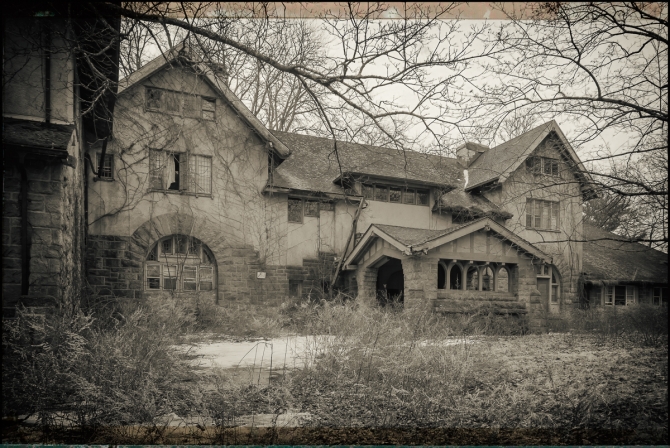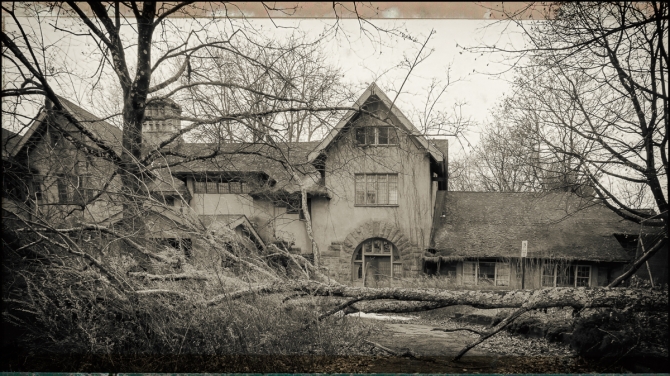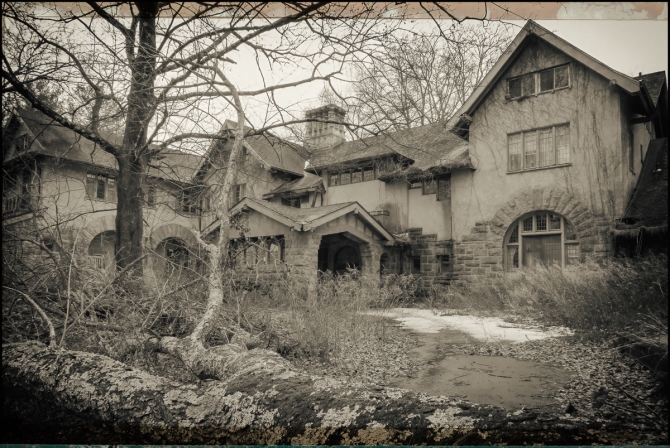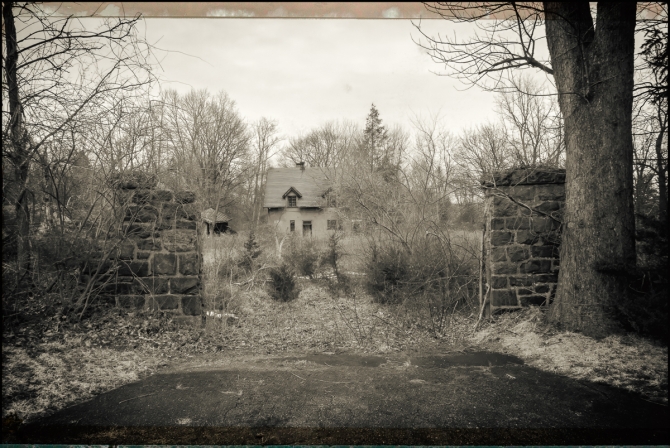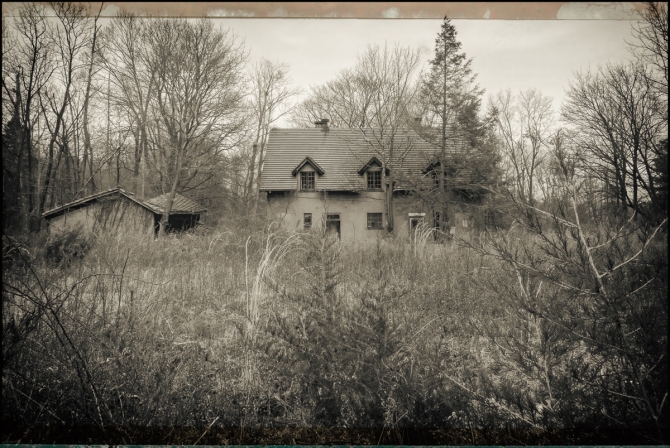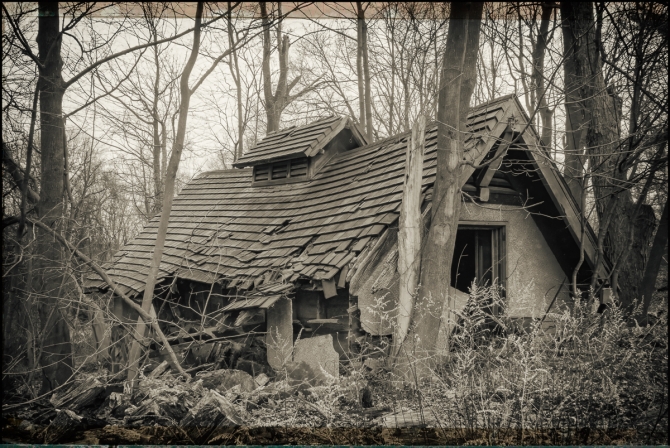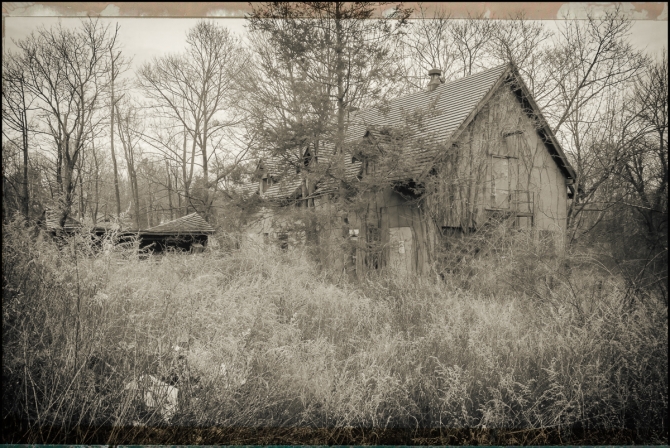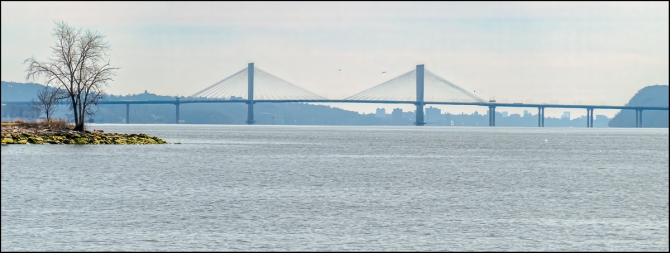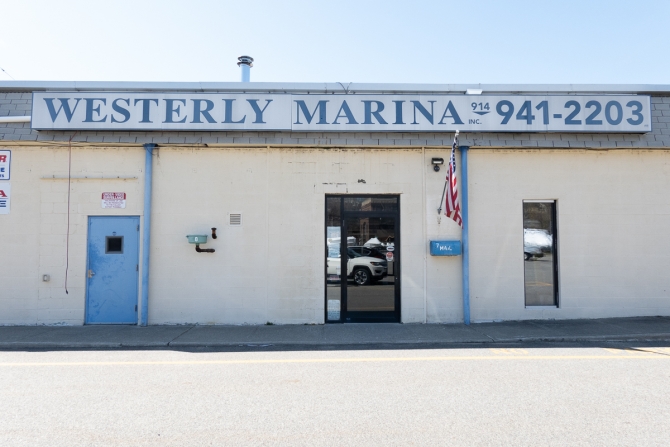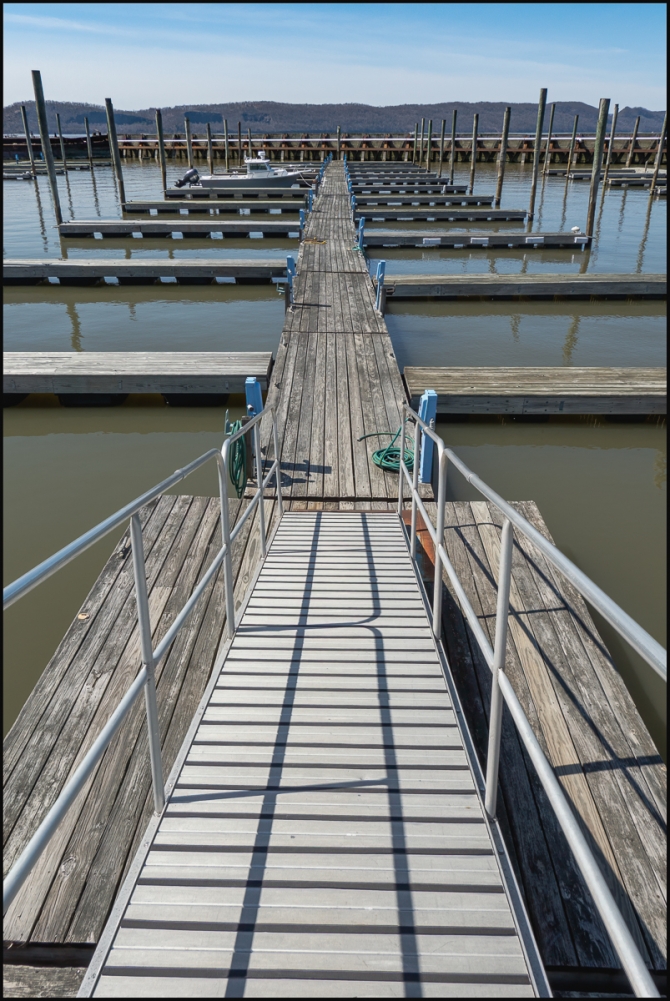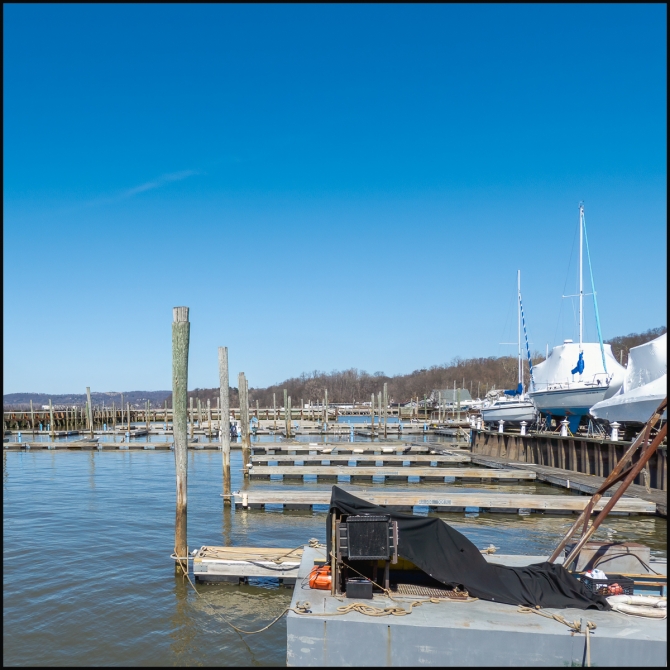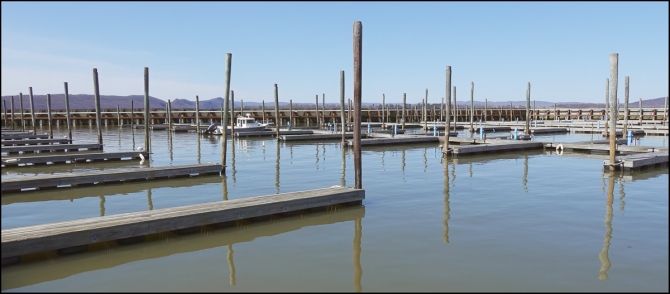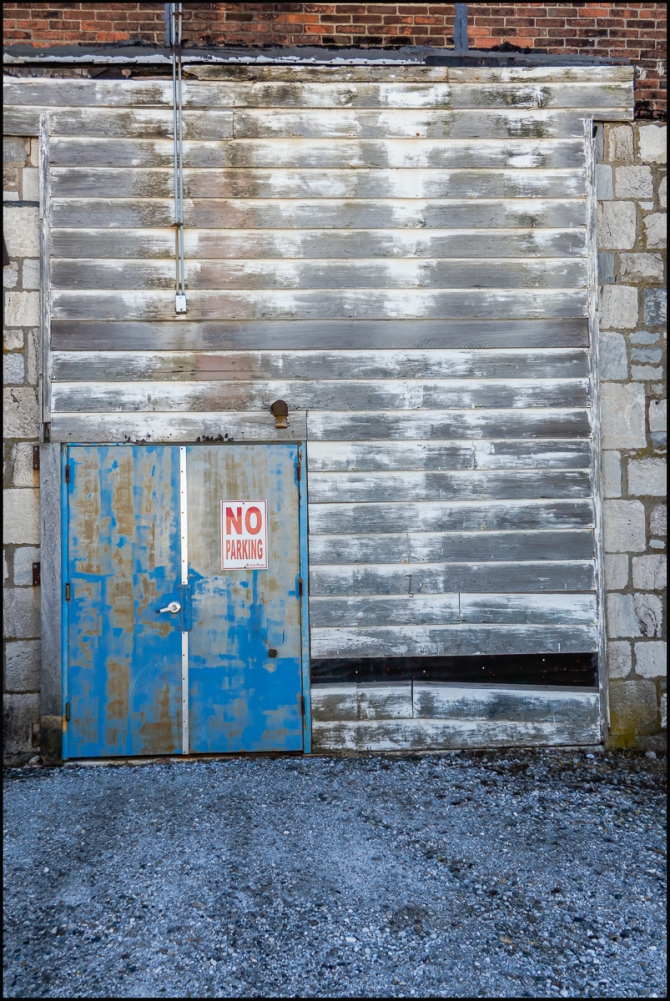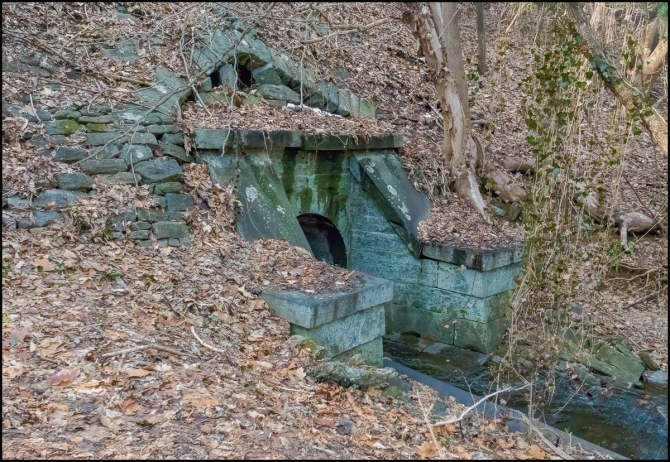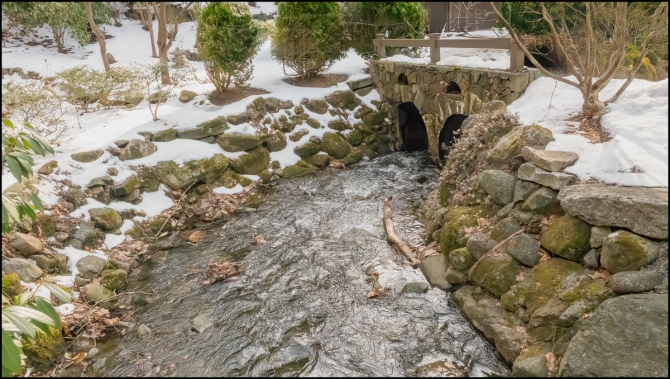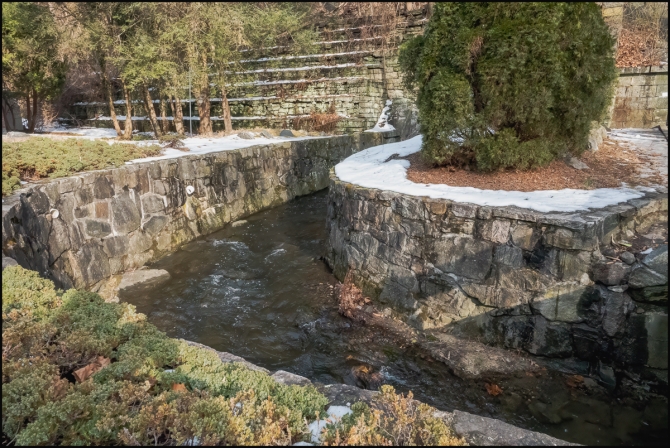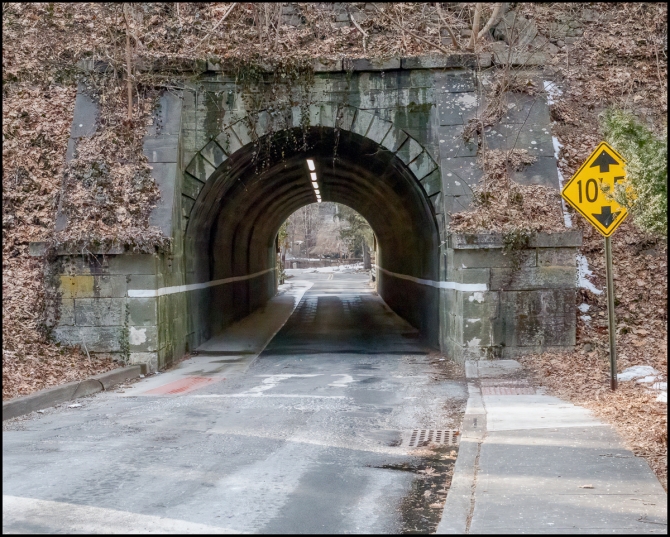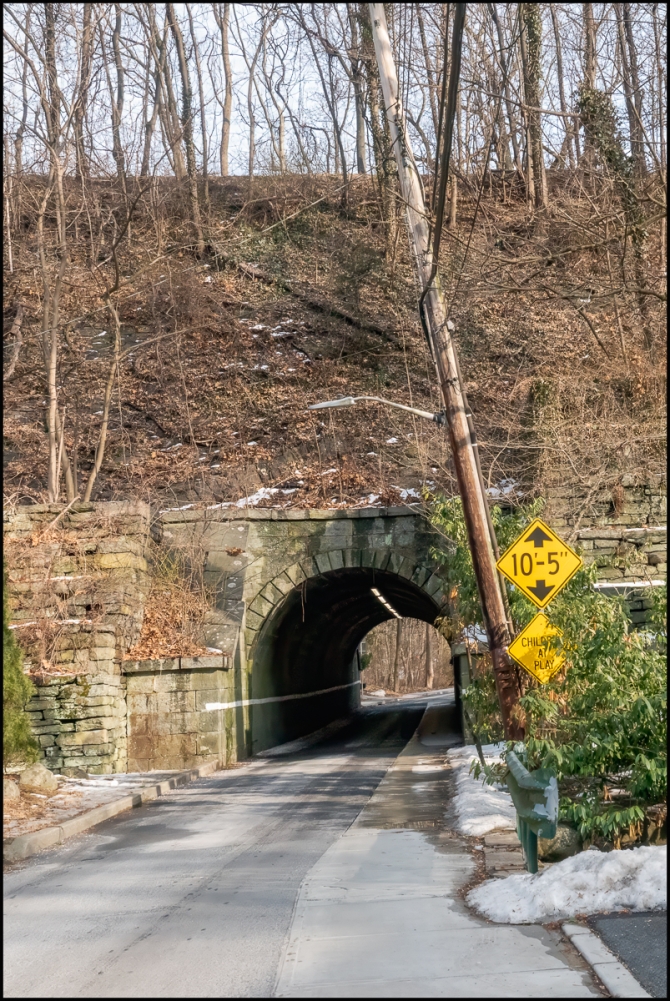Tappan Zee Bridge as seen from near Sing Sing Prison.
According to Wikipedia (which has considerably more information):
The Tappan Zee Bridge, officially named the Governor Mario M. Cuomo Bridge after the former New York governor, is a twin cable-stayed bridge spanning the Tappan Zee section of the Hudson River between Tarrytown and Nyack in the U.S. state of New York. It was built to replace the original Tappan Zee Bridge, which opened in 1955 and was located just to the south. The bridge’s north span carries the northbound and westbound automobile traffic of the New York State Thruway, Interstate 87 (I-87) and I-287; it also carries a shared use path for bicycles and pedestrians. The south span carries southbound and eastbound automobile traffic.
Although not as old as other bridges such as the George Washington, the original Tappan Zee was built in the midst of a material shortage during the Korean War and was thus only designed to last for approximately fifty years. The process to replace the bridge kicked off in 2012, with construction on the new spans beginning by contractor Tappan Zee Constructors in 2013. The Left Coast Lifter (one of the world’s biggest cranes) was instrumental in the construction of the bridge. The north span officially opened to westbound traffic on August 26, 2017, and eastbound traffic temporarily began using the north span on October 6, 2017. Contractors then began demolishing the old bridge. An opening ceremony for the south span was held on September 7, 2018, and traffic started using the new span three days later.
The bridge’s official name, which does not include the words “Tappan Zee” like its predecessor, has been controversial since its announcement. A petition and several legislative bills have sought to officially rename the bridge to the Tappan Zee Bridge or similar names. I will call it the Tappan Zee bridge, and I don’t know anyone who calls it the “Mario Cuomo” bridge.
The Tappan Zee river crossing was named by 17th century Dutch settlers. The Tappan Zee Bridge is the only crossing of the Hudson between Westchester and Rockland counties. The original Tappan Zee Bridge was a cantilever bridge built from 1952 to 1955. The bridge was 3 miles (4.8 km) long and spanned the Hudson at its second-widest point. It was the longest bridge in New York State, at a length of 16,013 feet (4,881 m) including approaches. Built immediately after the Korean War, the bridge had a low construction budget of only $81 million and a designed life-span of only 50 years. During its first decade, the bridge carried fewer than 40,000 vehicles per day.
Taken with a Sony RX100 VII.

